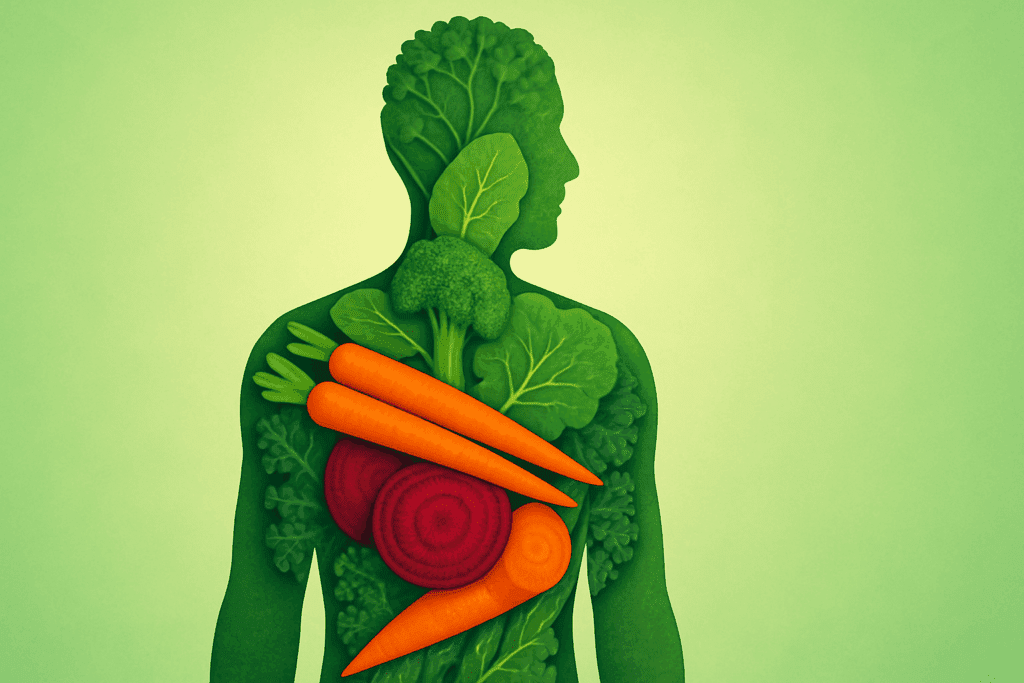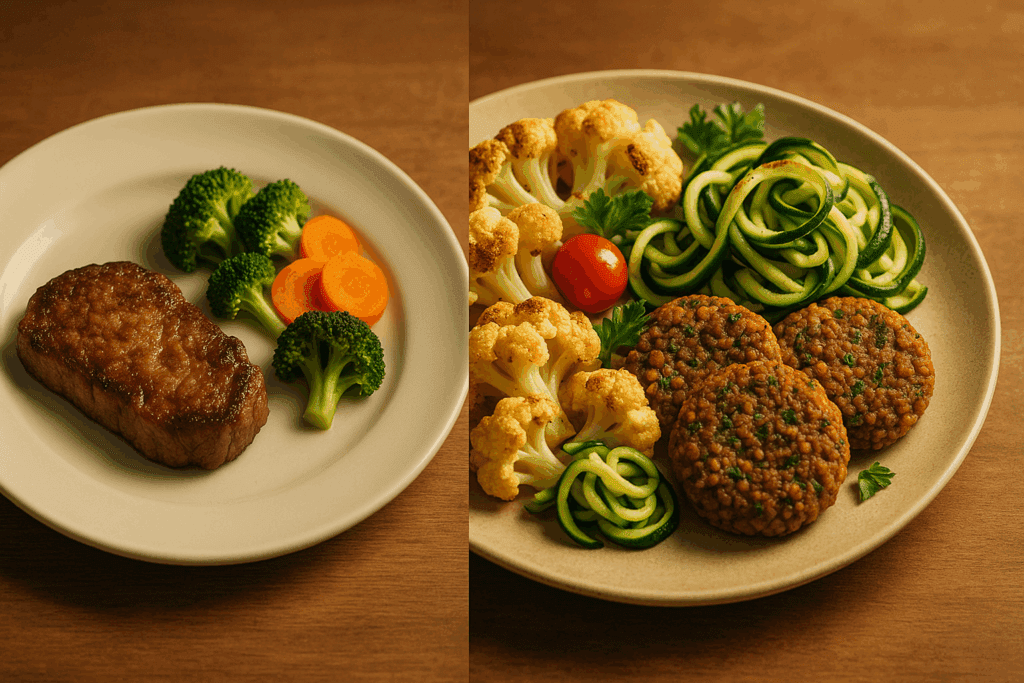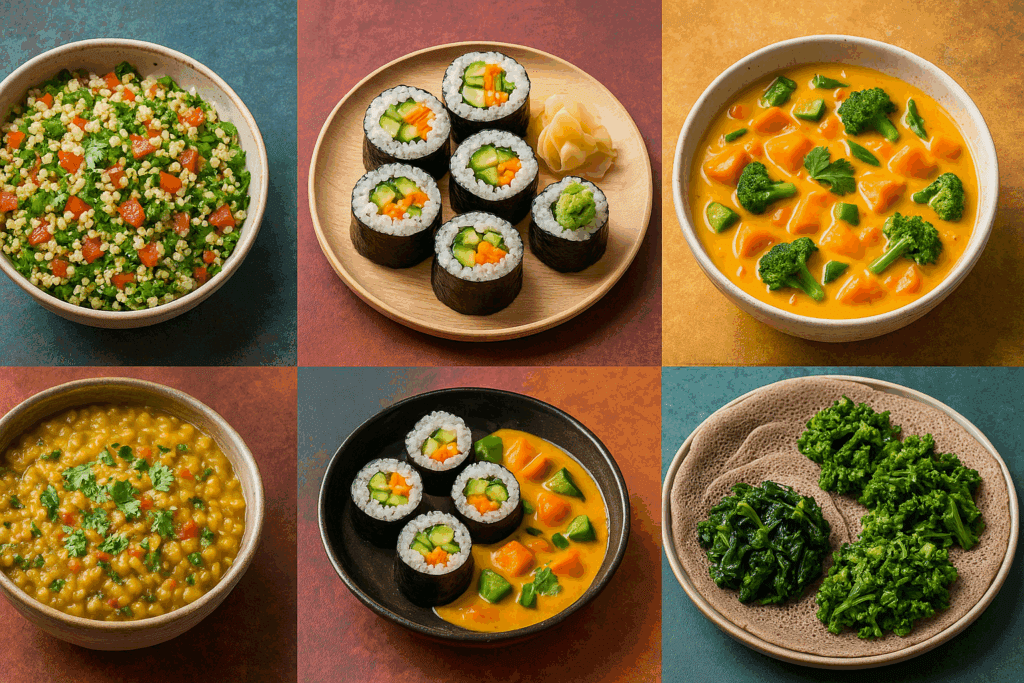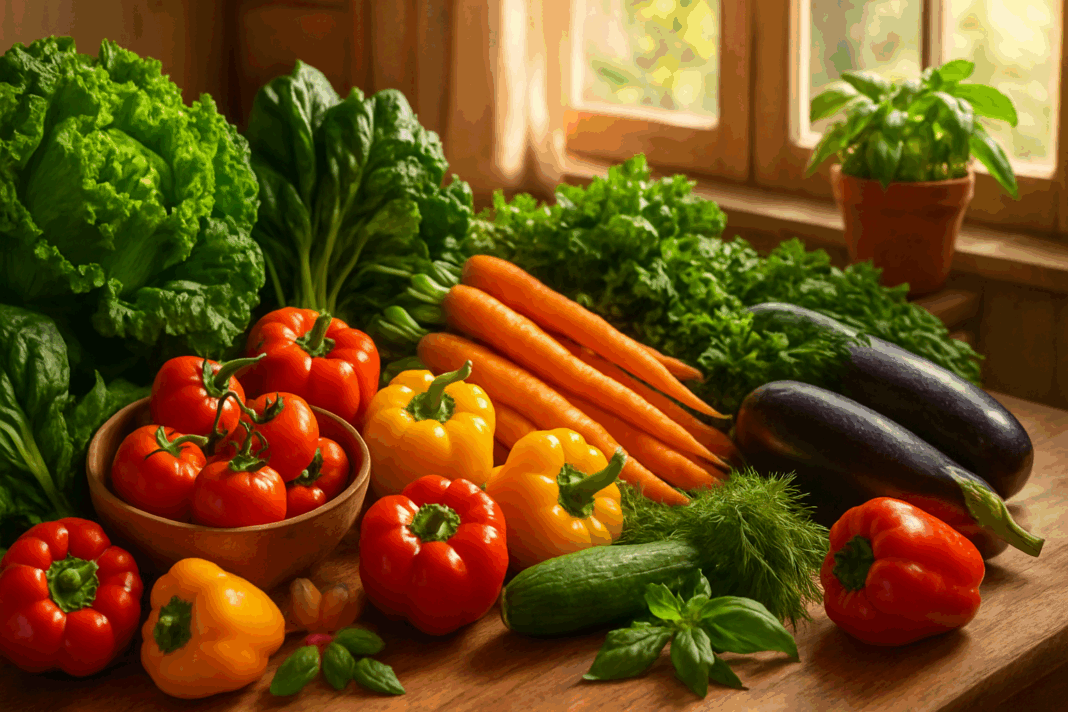The Power of Plants: Why Vegetable Based Meals Matter
As global health consciousness rises and conversations around sustainable living gain momentum, many individuals are turning their attention to vegetable based meals as a foundational component of a healthier lifestyle. The benefits of a plant-centric diet extend far beyond weight management or ethical eating; they include enhanced cognitive function, improved cardiovascular health, and a dramatic reduction in the risk of chronic illnesses such as type 2 diabetes and hypertension. These outcomes are not the result of restrictive dieting or fad regimens, but rather a return to nature’s most nourishing gifts: vegetables in their freshest, most vibrant forms.
You may also like: Healthy Plant-Based Dinners Made Easy: Best Whole Food Plant-Based Recipes for Beginners and Beyond
Vegetables provide an extraordinary array of phytonutrients, fiber, vitamins, and minerals that support the immune system and regulate inflammation. Their diversity in flavor, texture, and culinary versatility makes them the perfect centerpiece for anyone looking to build a plate that fuels both body and mind. As more people seek practical ways to incorporate whole foods into their routines, vegetable based recipes have evolved from bland side dishes into flavorful, dynamic meals that satisfy the senses.
Choosing vegetable based meals also aligns with growing environmental concerns. Plant-focused diets require significantly fewer natural resources to produce than animal-based alternatives and contribute less to greenhouse gas emissions. The decision to eat more vegetables is no longer just about personal wellness—it is a conscious contribution to planetary well-being. By weaving sustainability into daily food choices, individuals can cultivate habits that reflect a more holistic approach to health.
The Science Behind Plant-Fueled Nutrition
A wealth of scientific literature supports the role of plant-based eating in disease prevention and cognitive health. Cruciferous vegetables such as broccoli, kale, and Brussels sprouts contain glucosinolates, compounds that have been shown to reduce the risk of certain cancers and support liver detoxification pathways. Leafy greens like spinach and Swiss chard are rich in folate and magnesium, nutrients that contribute to neurological function and emotional regulation. Incorporating these into vegetable forward recipes not only diversifies the palate but also strengthens the body from the cellular level.
Fiber, a key element in most vegetable based meals, plays a vital role in digestive health and the maintenance of a stable microbiome. A balanced gut environment is increasingly linked to mood stability, memory retention, and reduced anxiety. Unlike processed foods, which often cause blood sugar spikes and crashes, whole vegetables offer a steady source of energy without contributing to metabolic disruption. This gentle nourishment supports sustained mental clarity throughout the day.
In addition to physical benefits, choosing vegetable based recipes also contributes to mental health. Diets high in plant foods have been associated with lower rates of depression, and the act of preparing fresh, colorful meals can itself be a form of mindful self-care. The textures, aromas, and hues found in a produce-rich kitchen engage the senses, turning mealtime into an immersive, nurturing ritual.

Transforming the Everyday Plate: Making Vegetables the Star
For many, the barrier to eating more vegetables lies not in availability but in habit. Traditional Western meals often relegate vegetables to the role of background player, a steamed or boiled side dish that rarely commands attention. But with a shift in intention and creativity, everyday dishes can be reimagined through vegetable forward recipes that emphasize complexity, flavor layering, and nutritional density.
One powerful strategy is to reframe familiar comfort foods using vegetable-based foundations. Cauliflower, for example, can be transformed into a creamy alfredo sauce or pizza crust, offering a fiber-rich and low-carb alternative to dairy and flour. Zucchini ribbons can stand in for pasta, while lentil or black bean patties can replace ground meat in burgers. These modifications allow for nutrient upgrades without sacrificing enjoyment.
Cooking methods also play a critical role in elevating vegetable based meals. Roasting enhances natural sweetness and creates appealing texture, while techniques like grilling or sautéing with aromatic herbs bring out depth and richness. Even raw preparations, when dressed with vinaigrettes or citrus, can yield bright, refreshing dishes that showcase the inherent beauty of vegetables. When prepared thoughtfully, a single vegetable can be the heart of an entire meal.

Building Balanced Meals with Plant-Powered Ingredients
Creating a satisfying and nutritionally complete meal from vegetables requires an understanding of balance and diversity. While leafy greens and colorful produce supply antioxidants and fiber, additional elements such as legumes, whole grains, seeds, and healthy fats contribute protein and sustained energy. Combining these ingredients in vegetable based recipes ensures that meals are not only nourishing but also filling and satisfying.
A grain bowl exemplifies this synergy: a base of quinoa or brown rice provides complex carbohydrates, while toppings like roasted sweet potatoes, chickpeas, avocado, and a lemon tahini dressing layer in creaminess, protein, and zest. Salads, often misunderstood as light fare, can be fortified with grilled tofu, seeds, and vibrant vegetables to become substantial entrees. The key is variety—both in flavor and function.
Another powerful addition to vegetable based meals is fermented foods, which introduce beneficial probiotics that enhance gut health. Kimchi, sauerkraut, and miso add tang and complexity while supporting digestion. Nuts and seeds, from walnuts to pumpkin seeds, offer omega-3 fatty acids and add crunch. A single recipe vegetable can transform when paired with bold accompaniments, creating dynamic, multi-dimensional meals that are anything but boring.

Weeknight Simplicity: Easy Vegetable Forward Recipes for Busy Lives
In a world that moves quickly, simplicity in cooking is crucial. Fortunately, vegetable forward recipes can be crafted quickly and efficiently, without compromising on nutrition or taste. One-pot dishes like lentil curry or chickpea stew can be prepared in under 30 minutes and provide several servings for future meals. Stir-fries with pre-chopped vegetables, tofu, and tamari glaze deliver bold flavor in minimal time.
Sheet-pan meals are another go-to for those seeking low-effort, high-impact cooking. By arranging vegetables like carrots, bell peppers, red onions, and squash on a baking tray with olive oil and spices, a full meal emerges from the oven with little cleanup. Adding protein sources such as tempeh or seasoned chickpeas creates a complete and hearty dish.
Smoothies and blended soups also offer practical ways to consume more vegetables. Ingredients like spinach, kale, or even frozen cauliflower can be blended into green smoothies without overpowering other flavors. Meanwhile, pureed soups like roasted red pepper or butternut squash offer warmth, comfort, and a concentrated dose of nutrients. These options demonstrate that with a few staples and smart planning, vegetable based meals can become the backbone of a busy lifestyle.
From Garden to Table: The Value of Seasonal Eating
One of the simplest ways to enhance the flavor and nutritional value of vegetable based meals is to eat with the seasons. Seasonal produce is harvested at its peak, which means it contains higher concentrations of vitamins and minerals and often requires less manipulation to taste its best. In spring, leafy greens and asparagus shine, while summer offers tomatoes, zucchini, and eggplant in abundance.
Fall brings robust root vegetables like beets, parsnips, and sweet potatoes, ideal for roasting and stewing. Winter greens such as kale and collards pair well with hearty legumes and grains. By aligning menus with nature’s cycles, eaters develop a deeper connection to food and reduce reliance on imported goods, lowering their ecological footprint.
Farmers’ markets and community-supported agriculture (CSA) programs make seasonal eating accessible and exciting. These venues offer exposure to heirloom and lesser-known vegetables that can reinvigorate even the most familiar repertoire. Cooking with locally grown produce inspires creativity and challenges the palate to embrace diversity. Each season becomes an invitation to explore new recipe vegetable creations and rediscover the pleasures of plant-based cooking.

Cultural Inspiration: Global Approaches to Vegetable Based Recipes
Around the world, vegetables have long been central to traditional cuisines. Exploring international dishes provides a wealth of inspiration for those seeking to expand their vegetable based meal repertoire. Indian cuisine, for instance, features dal, a lentil stew enriched with turmeric, ginger, and cumin. Mediterranean fare includes dishes like ratatouille, tabbouleh, and stuffed grape leaves, which celebrate herbs and produce.
In Japan, miso soup and vegetable sushi emphasize balance and presentation, while Thai cuisine excels in combining vegetables with coconut milk, lemongrass, and chili for dynamic flavor profiles. Ethiopian cuisine offers injera paired with richly spiced lentils and greens, exemplifying how whole foods can come together in nourishing harmony. Drawing from these culinary traditions not only adds excitement to meals but deepens appreciation for vegetables as universal staples.
When embracing global vegetable forward recipes, consider the spices and cooking methods that define each culture. Toasting spices, simmering broths, and marinating ingredients infuse vegetables with character. These preparations show that with thoughtful attention, any recipe vegetable can carry the same culinary weight as meat or dairy.
Rethinking Indulgence: Making Plant-Based Meals Comforting and Satisfying
There is a common misconception that vegetable based meals cannot be indulgent or emotionally satisfying. However, when approached with intention and creativity, plant-based foods can replicate the warmth, nostalgia, and comfort often associated with richer fare. Creamy mushroom risotto made with arborio rice and cashew cream provides richness without dairy, while a hearty vegetable shepherd’s pie uses lentils and mashed cauliflower for depth and satisfaction.
Desserts, too, can be crafted using vegetables in surprising ways. Sweet potato brownies, avocado chocolate mousse, and zucchini bread are all examples of how produce can bring moisture, fiber, and natural sweetness to treats. These dishes illustrate that health and enjoyment are not mutually exclusive.
The use of umami-rich ingredients such as mushrooms, sun-dried tomatoes, and nutritional yeast helps deliver that deeply savory flavor many associate with meat. Textural contrasts, such as crispy roasted chickpeas atop creamy polenta, add dimension and delight. When all the senses are engaged, vegetable based meals transcend their perceived limitations and become deeply pleasurable experiences.
A Lifestyle Rooted in Wellness: Beyond the Plate
Embracing a diet centered on vegetable based recipes often marks the beginning of broader lifestyle changes. Individuals who prioritize plant-forward meals frequently report increased awareness around food sourcing, cooking techniques, and waste reduction. This awareness ripples outward, influencing decisions about shopping, storage, and meal planning.
Mindful eating becomes a natural extension of this approach. Taking time to savor flavors, express gratitude, and eat without distraction fosters a deeper relationship with food. This can lead to improved digestion, better portion control, and heightened enjoyment. The kitchen becomes a space for reflection and connection, whether cooking solo or sharing meals with loved ones.
Vegetable based meals also promote longevity and resilience. Diets rich in plant foods have been linked to lower inflammation, stronger immunity, and reduced risk of age-related decline. By consistently choosing vegetable forward recipes, individuals invest in both immediate vitality and long-term health outcomes.

Frequently Asked Questions: Vegetable Based Meals That Nourish Your Body and Mind
1. How can I make vegetable based meals more appealing to picky eaters?
Creating flavorful, texture-rich vegetable based meals for picky eaters starts with understandingwhich vegetables they already tolerate and building from there. Roasting often enhances natural sweetness, making vegetables like carrots, sweet potatoes, and bell peppers more palatable. Pairing familiar comfort foods with subtle vegetable inclusions—like blending cauliflower into mac and cheese or sneaking spinach into pasta sauces—can ease the transition. Texture plays a key role, so offering crunchy roasted chickpeas or creamy vegetable dips can provide contrast and excitement. Over time, exposure to well-seasoned vegetable based recipes helps expand the palate.
2. Are vegetable forward recipes suitable for people with high protein needs?
Absolutely. With thoughtful combinations, vegetable forward recipes can meet even elevated proteindemands. Lentils, chickpeas, edamame, and black beans offer excellent plant-based protein, especially when paired with whole grains like quinoa or brown rice. Adding ingredients like tofu, tempeh, or seitan further enhances protein content while keeping meals plant-centric. Smoothies can be fortified with nut butters or plant protein powders for convenient post-workout recovery. By rotating diverse plant sources, you ensure complete amino acid intake within a varied menu of vegetable based meals.
3. How do I keep vegetable based meals budget-friendly?
Seasonal shopping is key to affordability. Vegetables bought in season or from local markets oftencost less and offer higher nutrient density. Staples like carrots, cabbage, frozen spinach, canned beans, and bulk grains stretch meal costs while remaining versatile. Planning vegetable forward recipes that utilize overlapping ingredients minimizes waste and maximizes value. Additionally, making large batches of soups, stews, or grain bowls and freezing portions reduces the need for daily cooking and limits food spoilage. With a bit of planning, vegetable based recipes can be both economical and nourishing.
4. What are some overlooked vegetables that elevate everyday meals?
Many home cooks stick to familiar produce, yet branching out opens new culinary dimensions.Kohlrabi adds a crisp bite to slaws and stir-fries, while sunchokes provide an earthy sweetness when roasted. Fennel brings an aromatic, licorice-like note to salads and sautés. Romanesco, with its fractal shape and mild flavor, is excellent steamed or baked. Exploring lesser-used ingredients within your recipe vegetable repertoire boosts variety and nutritional diversity.
5. How can I batch cook vegetable based meals for the week without getting bored?
The secret lies in preparing versatile base components and changing up seasonings or presentations.Roasting a large tray of assorted vegetables, cooking a grain like farro or bulgur, and prepping a protein like lentils or tofu gives you mix-and-match possibilities. One day you might build a Mediterranean bowl with tahini and olives; another day, turn the same ingredients into a wrap with hummus or a curry with coconut milk and spices. Vegetable forward recipes become endlessly adaptable with globally inspired sauces, toppings, and textures.
6. Can vegetable based recipes support hormonal health for women?
Yes, many vegetable based meals naturally support hormonal balance, especially when theyemphasize fiber, phytonutrients, and healthy fats. Cruciferous vegetables help metabolize estrogen more efficiently, while flaxseeds and pumpkin seeds contain lignans and zinc that play a role in hormonal regulation. Avocados, nuts, and olive oil contribute omega-3s that reduce inflammation, which is key to hormonal equilibrium. Including a rainbow of colors in vegetable based recipes ensures a range of antioxidants and plant compounds that positively influence endocrine health. These meals can be particularly beneficial during menstruation, perimenopause, or stress-induced imbalance.
7. How do I build muscle on a diet centered around vegetable based meals?
Building muscle while following a plant-rich approach requires strategic meal composition. Prioritizehigh-protein vegetable based recipes featuring legumes, soy foods, whole grains, and seeds. Pre- and post-exercise meals should include both protein and complex carbohydrates to aid muscle repair and glycogen replenishment. Tracking protein intake using a nutrient app can help ensure adequacy. Many elite athletes rely on vegetable forward recipes supplemented with plant-based protein powders to support strength goals without compromising whole food integrity.
8. Are vegetable forward recipes suitable for children and teens?
Children and teens can thrive on meals centered around vegetables, provided they receive enoughcalories and nutrients during growth stages. Bright colors and fun textures can help make vegetables more enticing—think rainbow wraps, veggie sushi rolls, or zucchini tots. Recipes that incorporate whole grains, legumes, and plant-based proteins ensure they get sufficient iron, B12 (if supplemented), and omega-3s. Encouraging participation in meal prep increases enthusiasm and willingness to try new recipe vegetable combinations. With creativity and planning, these meals can meet the needs of even the most active or selective young eaters.
9. How can I introduce more vegetable based meals without fully going vegetarian?
You don’t need to eliminate animal products entirely to benefit from vegetable forward recipes. Startby adopting a “Meatless Monday” habit or choosing one plant-based meal per day. Focus on incorporating more legumes, grains, and seasonal vegetables into existing favorites—such as replacing half the meat in chili with lentils or serving pasta with roasted vegetable sauce. Over time, your repertoire of vegetable based recipes will expand naturally, offering satisfying alternatives without pressure or restriction. Flexibility supports long-term sustainability and personal enjoyment.
10. What are some signs that my diet needs more vegetable based meals?
Common signs include sluggish digestion, low energy, frequent cravings, or skin dullness—all of whichmay indicate insufficient fiber, antioxidants, or hydration from food. If your meals lack color or consistently revolve around highly processed items, you may benefit from shifting toward vegetable based meals. Adding greens to breakfast smoothies, enjoying a vegetable soup at lunch, or making roasted root vegetables part of dinner can quickly improve overall well-being. By increasing the presence of vegetable forward recipes in your routine, you support detox pathways, energy balance, and mental clarity without extreme dietary overhauls.

Conclusion: Embracing Vegetable Based Meals for Lifelong Wellness
Vegetable based meals offer more than just dietary solutions—they are invitations to nourish both body and mind in deeply meaningful ways. From the science of nutrition to the joy of seasonal and cultural exploration, vegetable forward recipes support every dimension of well-being. Whether through simple weeknight dishes or elaborate culinary creations, vegetables provide the foundation for a vibrant and resilient lifestyle.
By embracing this approach, individuals align their daily habits with values of sustainability, mindfulness, and health. They discover that a single recipe vegetable, when treated with care and imagination, can become the centerpiece of a deeply satisfying meal. In the process, cooking becomes not just a means to an end, but a celebration of life’s abundant, colorful, and nourishing possibilities.
As the conversation around health and climate continues to evolve, vegetable based meals stand out as one of the most impactful and accessible choices. Each bite affirms a commitment to vitality, to community, and to the planet we all share. With every chopped carrot, seasoned lentil, and roasted beet, we shape a future that is not only healthier, but also more deliciously connected.

